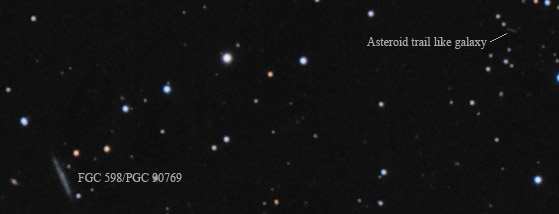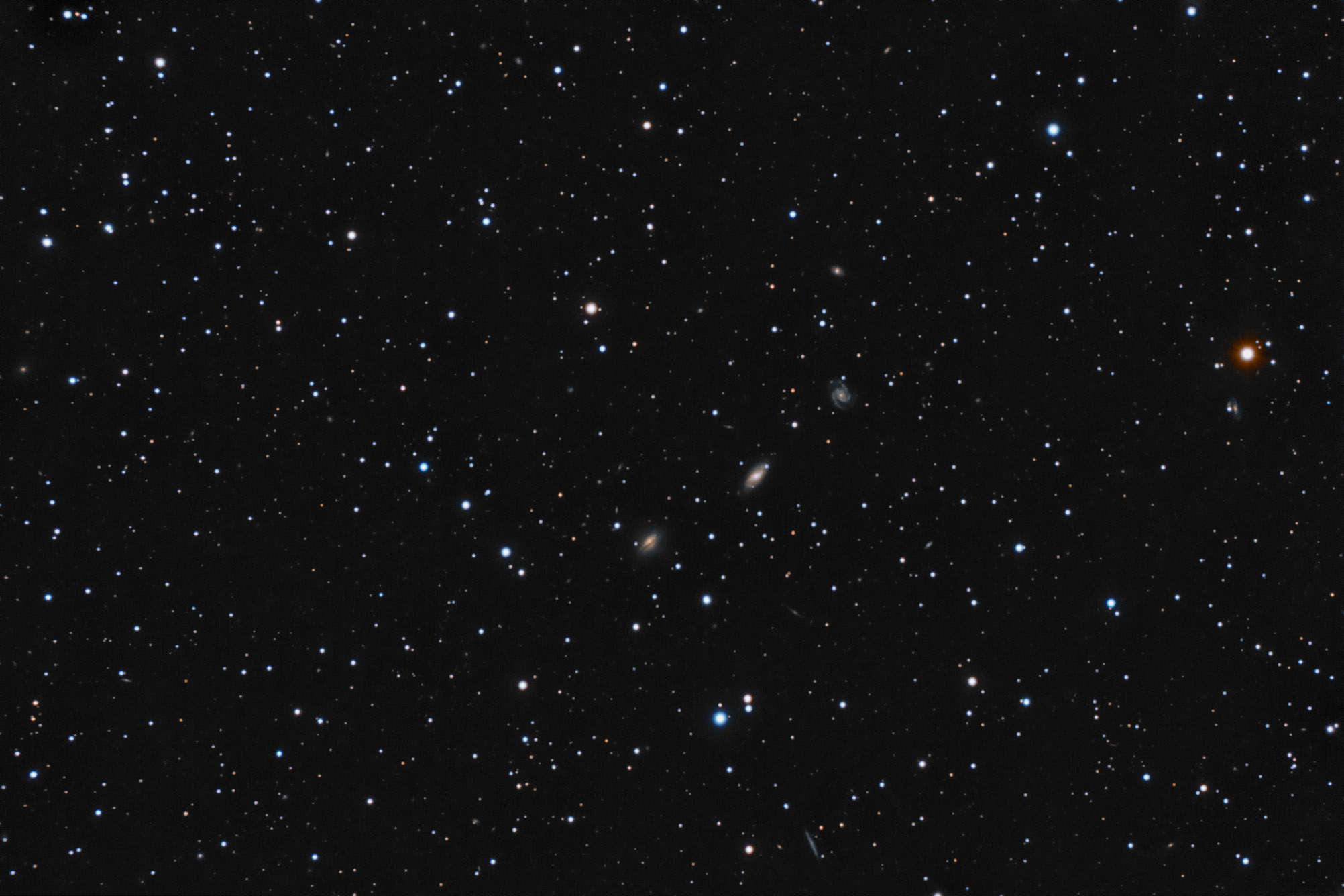| Description | Images |
Object name: WBL130Designation(s): WBL130, UGC03679, UGC03673, WBL 130 is a three galaxy group in the southeast corner of Lynx. NED lists it as being about 270 million light-years away and consisting of three galaxies. But what three? It would seem easy, the three obvious ones in my image. Problem is one of the three is a background galaxy. Redshift shows the lower left one, UGC 03679, to be an Sa galaxy that is 270 million light-years away. So far so good. The middle galaxy is CGCG 205-017, an Sb spiral at 267 million light-years. So that fits. But the upper right galaxy, UGC 03673, a SABcd spiral, is listed with a redshift that puts it 687 million light-years away. It is 2.5 times more distant yet only slightly smaller in angular size so must be about 2 times larger. So where is the third member of the group? Maybe this is it. The WBL catalog is labeled as being a catalog of nearby, poor, galaxy groups. It doesn't record distance so that was provided by NED from some other source. Nor does it list a diameter for the group. So it may be that it just records apparent groups whether they are all members of the same local group or not. But then we come to the flat galaxy at the bottom of my image. It is FGC 598, an Sd spiral that has a redshift that puts it 272 million light-years away. So it certainly is related to the lower two galaxies above. Also, NED lists a note about it under those two galaxies as well as under FGC 598. So that points to it being the third member. Are any of the other galaxies in the image also at about 270 million light-years? Darned if I know. These are the only 4 galaxies in the image on which NED has any redshift data. The few others it lists are all from the 2MASS survey and don't even include magnitude estimates since the survey isn't at visual light frequencies but those sort of between IR and radio. Related Designation(s):2MASS J07070077+4450589, 2MASS J07072809+4447241, 2MASS J07072824+4447219, 2MASX J07070077+4450588, 2MASX J07072811+4447236, 2MASXi J0707007+445058, 2MASXi J0707281+444723, AKARI J0707280+444728, CGCG 0703.3+4455, CGCG 0703.8+4452, CGCG 205-016, CGCG 205-018, GALEXASC J070728.06+444724.4 , HDCE 0422 NED003, IRAS 07038+4452, IRAS F07038+4452, KTG 13A, KTG 13C, LDCE 0479 NED015, MCG +07-15-005, MCG +07-15-007, NVSS J070728+444723, PGC 020172, PGC 020190, UGC 03673, UGC 03679, UGC03673, UGC03679, UZC J070728.2+444725, WBL 130, WBL 130-001, WBL 130-003, WBL130, [MGD2014] 0703.8+4452, |

